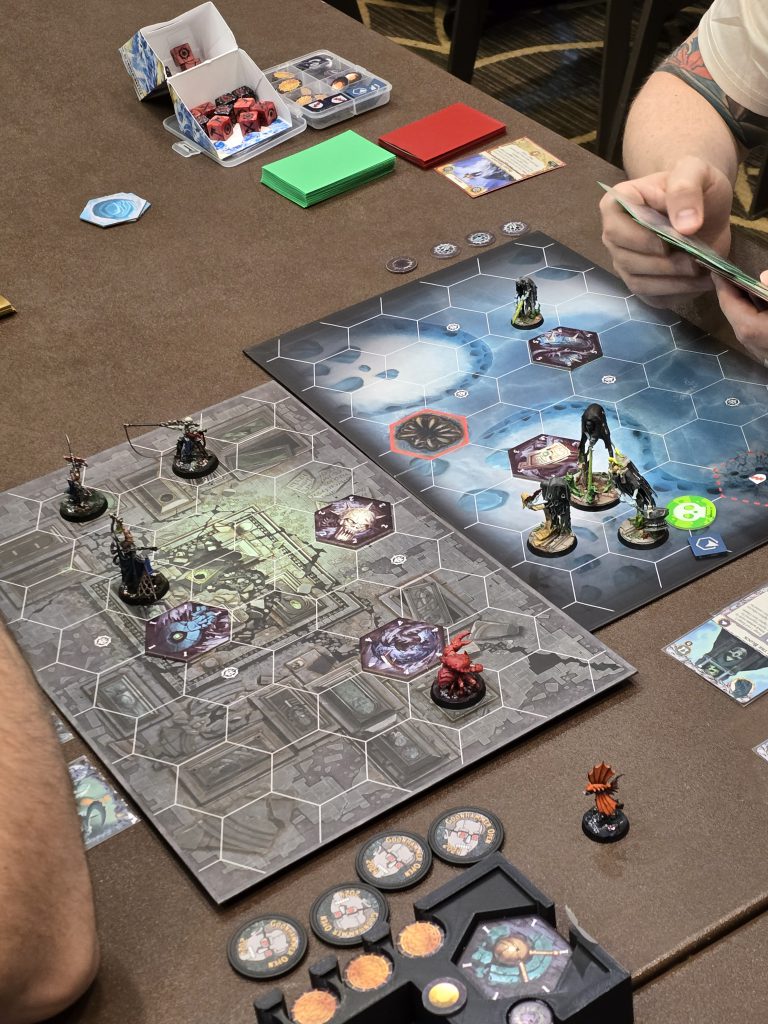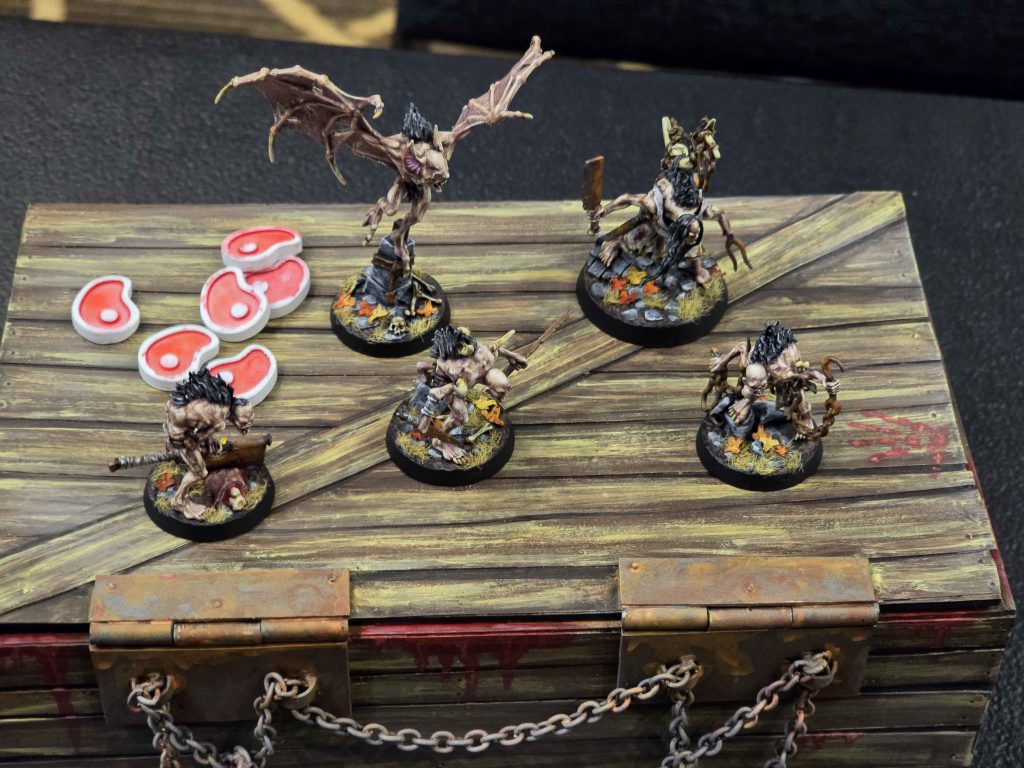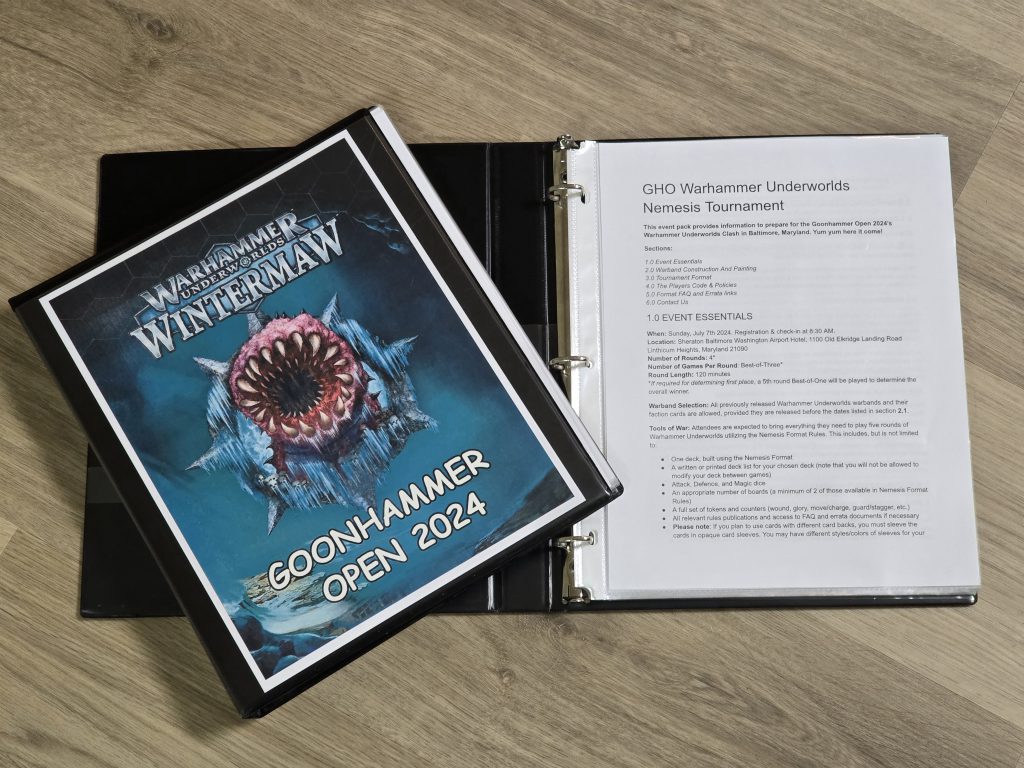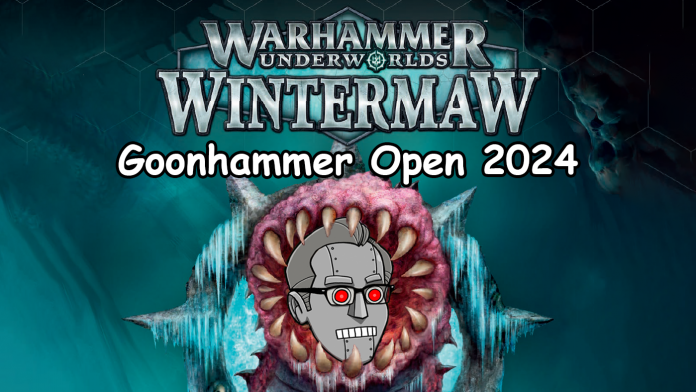So you want to run an event but have no idea where to start. The good news is I was in your shoes just a few short months ago. The bad news is I probably stepped in something. Sorry about that.
This article will cover the process I took to run my first event as a Tournament Organizer, which was the Warhammer Underworlds tournament at the Goonhammer Open Maryland 2024. I’ll be doing a general overview of the preparation I took, as well as hitting on elements specific to Underworlds for any budding Clash organizers out there.
To set the stage, I have never organized any kind of tournament or event. I don’t necessarily think it’s best practice to run your first event ever and have it be a World Championship Qualifier. That said, this is one of those “If I can do it, anyone can do it!” type of situations. If you’ve ever thought about running an event, or if you noticed there’s an event-shaped hole in your local community, give it a shot!

Why Run an Event?
Odds are high if you’re reading about how to run an event, you’ve already got this question answered. However, maybe you’re trapped here and being forced to consume Goonhammer content before Gregbot will release you from a basement prison. In that case, I’ll try to keep it brief so you can see daylight again.
Passion for the game: Your motivation could be as simple as you really enjoy the game. You like playing it, you like reading about it, you like talking about it. After exhausting all of these options, perhaps you want to try out the experience of running an event instead of only participating in them.
An event-shaped hole: Maybe you’re not champing at the bit to run an event for your beloved game, but it seems like nobody else is either. If this is the case, you have the option of sitting back and hoping that someone steps up to take on the role, or you can nominate yourself. It’s not quite the same as playing your chosen game, but being the one in charge of allowing a gathering of nerds to form and play a bunch of concurrent games is satisfying in its own way.
Fostering a community: Some games have a built in presence that allows you to visit any LGS and reasonably expect to be able to get some games in with locals at some point during the week. Others require a little more work in spreading the word and growing or finding a group of players interested in playing. The process of starting a gaming community from scratch is beyond the scope of this article, but if you have already been involved in that process then hosting an event as a kind of celebration of “making it” is a fantastic capstone.
For the Underworlds event at GHO, all three of these applied to me. First, I’ve truly been enthralled with this game since I discovered it late last year. Next, I was tentatively asking around if there was any chance of someone running Underworlds at GHO because I would have enjoyed playing in such an event, but it didn’t seem like it was going to happen. Thirdly, my LGS has managed to go from “quarterly-ish Underworlds events” to “twice monthly pick-up-game nights” to an impressive “two clashes in two months, including one with ten players” since the start of the year. I am incredibly proud of both the LGS player base as well as the honorary locals who drive in from about an hour away to get in on these events.
Those were the reasons I decided to pester the Goonhammer staff and see if they’d let me try my hand at running an event. Spoiler: they did. I’m going to break down the preparation steps I took, and you could take, into two categories: long-term and short-term.

Long-Term Preparation
Great. You’ve decided to run an event. Let’s start with the stuff you can start preparing for immediately upon making the decision.
Set expectations: This is top priority of all the following bullets. What is the goal of this event? How can you arrange things to meet that goal? A local, single day, newcomers focused event will be structured differently from a multiple day event that you expect people to travel in for. If it’s your first event, maybe don’t aim to have 64 players. If it’s a local event and you know your locals like to play Format X, don’t try to start off with Format Z.
Pick a date: If you’re not piggybacking onto an established larger event (like, say, the Goonhammer Open in Maryland) then you’ll have flexibility with your target date. Set something far enough out that you’ll have time to properly prepare and get the word out. If it is intended to be a smaller, local event then I’d suggest something around the 2-4 months mark. That’s far enough out that people can plan for it, but not so far out that they’re going to forget and/or other factors could blindside you to interrupt. If it’s one that you expect people will be traveling to, I’d bump that up to 6+ months to give everyone time to book travel accommodations.
Pick a venue: There are many factors that go into the venue – price, space, hours, parking, tables, food access, and more. If it’s your first event, it’s hard to go with wrong a good LGS. Aside from being a place a lot of your attendees may already be familiar with, an LGS with play area will likely already have the required tables and accoutrements you need for your game of choice. If this isn’t an option for you, other places to consider are community centers, school gymnasiums, and library conference rooms are all worth checking out.
Decide on event size: This is another multifaceted aspect to the planning. Not only do you need to consider how many players would be interested in the vent, you need to make sure that your venue can support that number and that you will be able to play the required amount of games to have a decisive winner. Some games take more time to play, and with a large enough player count it will be harder to get an undefeated player at the end of the day. If you have an event large enough that this is an issue, you’ll need to consider stretching into two days and/or having tie breakers be a more impactful aspect of the event.
Make a player packet: Player packets are a wonderful resource. They allow you to share all the details of the event format, preemptively answer questions players may have, provide contact information, outline schedules, and serve as a reference during the day of the event. Creating one of these from scratch could be pretty time consuming, but fortunately not everything in 2024 is a dumpster fire and you can easily find plenty of player packet templates out there to use as a base. This is where you’ll settle on the specific details of your event such as number of rounds, round time, best-of-three vs best-of-one, etc.
Make your event in BCP (etc): Unless you really want to bust out a spreadsheet and/or do pairings by hand, you’ll want to lean on a tournament companion program. There are a variety of these, but the one most common in the Games Workshop sphere tends to be Best Coast Pairings (BCP). It’s flexible, fairly easy to use, and covers an enormous variety of games. Some games have dedicated event handling programs, so if your game is one of those it might behoove you to try one out.
Brush up on rules: If your event isn’t going to have separate, dedicated judges you’ll likely be filling the roles of both TO and judge. Take this time to start familiarizing yourself with the rules. Whether you’re flipping through the rulebook or reading recently released FAQ/commentary from the designers, it’s a good idea to keep mechanics fresh in your head. Some online communities have places where players post questions to get rulings – start lurking in those! Read the submitted questions and answers. Fortunately, a lot of the questions that come up will (ideally) be answered by reading the player packet and/or reading the relevant sections of the rules to the players.
I admittedly had a leg up on a lot of first time event planners in terms of long-term prep because the great folks at Goonhammer already decided on the date, venue, and a rough cap on the event size. I was still able to influence a fair bit of the event, however. With a ticket to the World Championship of Warhammer on the line, that helped me shape the expectations of the event.
I wanted it to be slanted toward a typical “competitive” format but still be friendly to the newer players who I expected to show up. Specifically, I chose to:
- use the Nemesis format since that is becoming the standard accepted format (at least in the States)
- run Best-of-Three rounds to allow the effects of luck to be flattened a little bit and, in theory, allow player skill to come to the fore more readily
- schedule two hour long rounds to ensure that even newer players wouldn’t be too crunched for time to finish their games
- implement the 7 glory differential cap in games which (a) encourages players to call a game if it’s obvious and use their time for remaining games and (b) prevent blowouts where the leading player feels incentivized to grind their losing opponent into the dirt just to score higher on tie breakers
The player packet itself was based on the template provided by the wonderful folks over at Battle Mallet (check out the template here). It is truly a tremendous reference.

Short-Term Preparation
Phew, that was all the hardest parts. Now you’re in the approximately 1-2 week window before the event. By now, you should have a rough idea of how many people will be showing up and what the day should look like. Frankly, you could call it quits here and just rock into the event with everything above. However, I did a few extra things that I felt were a substantial boon to me on the day of the event.
Make an event notebook: This is a pretty simple item that I put together the day before. I grabbed a few 3-ring binders and a pack of page protectors, then sleeved up printouts of the most recent FAQs, Designers’ Commentary, and the Player Packet. I also printed an extra copy of the event schedule and slid it into the back cover for an easy reference throughout the day.
Write a pre-event brief: I know you spent a lot of time on your Player Packet. It’s a work of art and has everything outlined. I also assume maybe 50% of your players read it, so if there’s anything particularly useful in there, you may want to restate it before the event starts. I took the highlights from the packet and made a rough outline of the pre-event brief to give to the players before the first set of pairings went up.
Prepare your event bag: If you want to go the extra mile, you could toss a few spares of important game-related items in your event bag for your players. This is easier for some games than others – you won’t be able to fit a spare Warhound Titan in your bag, but you could bring an extra set of dice, tokens, boards, mission cards, tape measure, etc. This isn’t necessary, but if it’s ever relevant then you can look like you know what you’re doing!
My event notebook was pretty much exactly as described above. I had a copy of the Player Pack. I had the latest copy of the following from Warhammer Community: Nemesis Format Rules, Wintermaw Rules Update, Wintermaw Designer’s Commentary, and Previous Seasons Designer’s Commentary. Along with the latest rule book, this little set of papers was responsible for answering probably 95% of the questions that came up on the day. Even better, there were times I’d look down at the opposite end of the table and see players flipping through it to answer their own questions. I felt an irrational amount of satisfaction at that every time I caught it.
Likewise, the pre-event brief was simple. I touched on the two hour rounds and how this meant it was roughly divided up into three 40-minute games for a best-of-three. I brought up the glory differential scoring, what will happen if time is called and games are still ongoing, and quickly outlined the schedule for the day.
Sadly, I didn’t prep my event bag quite as well as I had planned. I did think to bring extra dice and boards, just in case they were needed. However, I forgot to bring a set of objective tokens which did become relevant during the second round. Fortunately, Underworlds players continue to be the coolest and another player stepped up to loan them out.

Closing Thoughts
To be frank, running GHO’s first ever Underworlds event was less stressful than I had anticipated it being. I’m fully aware that it went as smoothly as it did solely thanks to the Goonhammer staff, most of whom are old hands at this kind of stuff, and the disturbingly wholesome and helpful Underworlds community who were eager to answer my questions and offer advice.
I have some specific shout-outs to end this article with, so here we go in no particular order:
- Fowler from Goonhammer for letting an unproven new guy run an event at GHO and answering my barrage of questions.
- Rob also from Goonhammer for paint judging even while running his own massive event and giving me a bunch of pointers while doing so.
- Battle Mallet for having the helpful organized play page with resources I leveraged.
- Fishmode from Spent Glory for a timely set of articles on participating in and running Underworlds events.
- Brian and Skyler from the What the Hex?! Podcast for answering so many questions and assisting with hammering out the event scheduling.
- Leathanam for helping with event details and scheduling.
- RJ for noticing me buying box after box of Underworlds from the store and going, “Hey, I also like this game,” which lead to a great local community.
- Greg also also from Goonhammer for being my future Underworlds sparring partner (you probably don’t know this yet but congratulations anyway – I’m dragging you into this game).
- My wife who is super cool.
Have any questions or feedback? Drop us a note in the comments below or email us at contact@goonhammer.com. Want articles like this linked in your inbox every Monday morning? Sign up for our newsletter. And don’t forget that you can support us on Patreon for backer rewards like early video content, Administratum access, an ad-free experience on our website and more.


